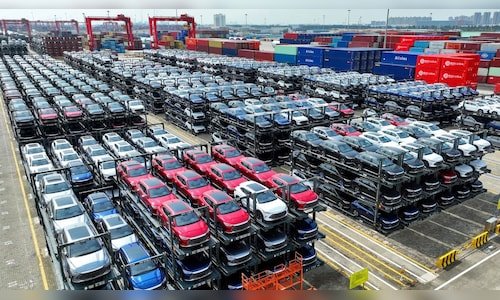According to Puneet Gupta, Director of India & ASEAN Auto Market at S&P Global Mobility, any production halts triggered by the restrictions could push the industry toward negative growth. “When 2025 began, OEMs were already expecting low single-digit growth. Now, any production halts could push the industry toward negative growth,” Gupta told CNBC-TV18.
He said the sector is facing yet another supply chain crisis, coming on the heels of the semiconductor shortage and pandemic-induced disruptions. “One thing is clear, the auto industry is facing yet another crisis,” he said, warning that while June may pass under stress, July could see production stoppages.
Gupta noted that large-volume OEMs like Maruti Suzuki and TVS Motors are particularly vulnerable to the latest disruption. These companies could face greater risks due to their scale of operations and reliance on timely delivery of critical components.
Inventory buffers with tier-2 suppliers may not offer much relief either. Gupta explained that while some suppliers hold three to six months of inventory, even a single supplier running low can create a bottleneck across the chain.
As for alternatives to sourcing from China, Gupta cautioned that the options are limited in the short term. “Right now, there’s a rush to procure even sub-assemblies from other countries if possible. But alternatives can’t be adopted immediately, they may reduce performance, and homologation is required before changing any components,” he said.
He called for swift diplomatic intervention and industry coordination to fast-track approvals and shipments from China.
The impact, he stressed, is not limited to electric vehicles. Even ICE two-wheelers and three-wheelers could be hit, as rare earth magnets are used in common components like speedometers, catalytic converters, and lighting systems. Gupta said, “It’s not just EVs, the impact spans across all vehicle segments.”
Higher-end variants of vehicles, which depend more heavily on sophisticated components using rare earth elements, could be affected first. OEMs may even consider shifting their focus to mid-range or base variants to manage the crisis.
Sub-assemblies from other markets might offer a short-term cushion, Gupta added, but the broader risk of disruption remains high until alternative supply chains are established or China’s restrictions are eased.
